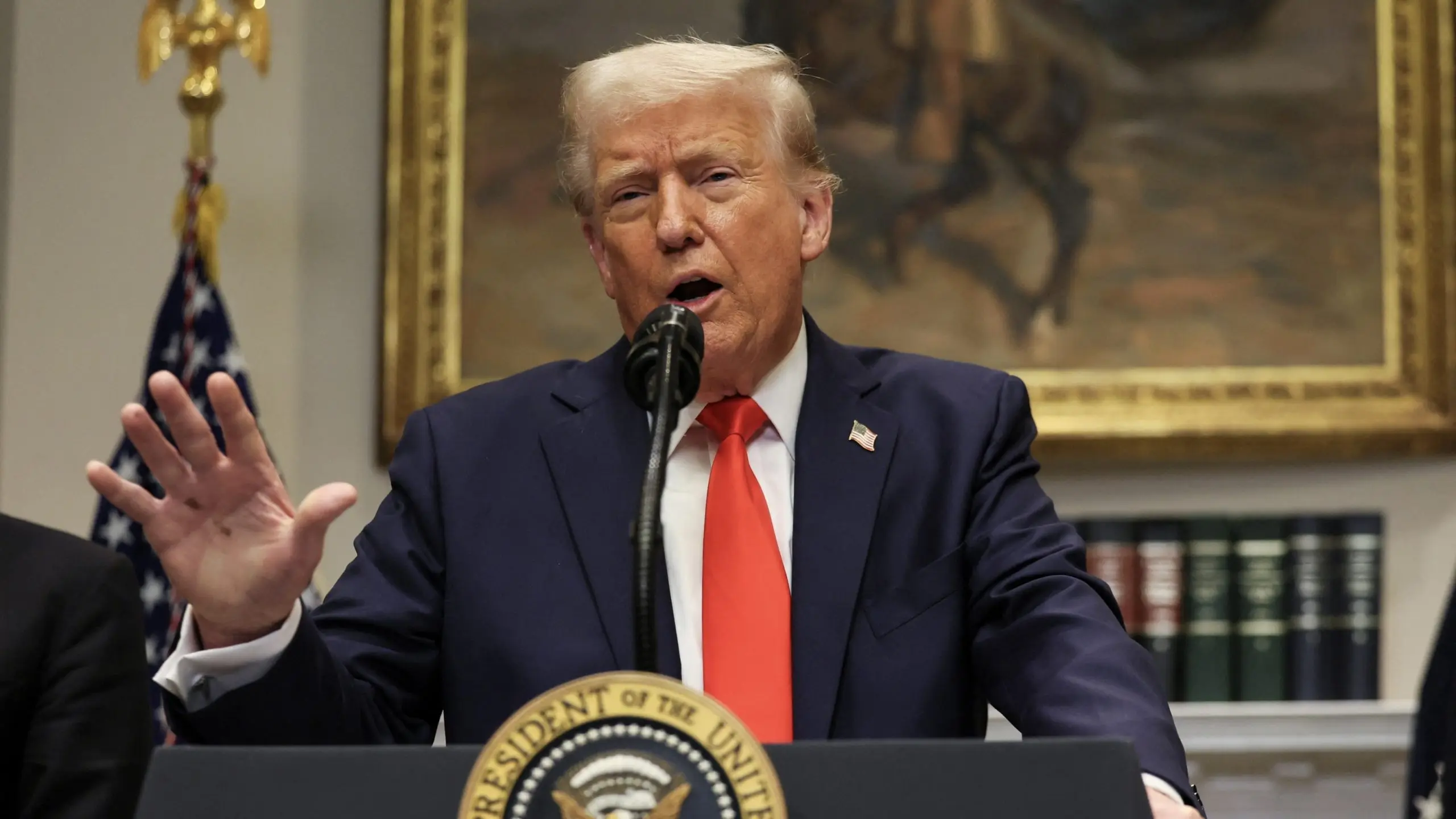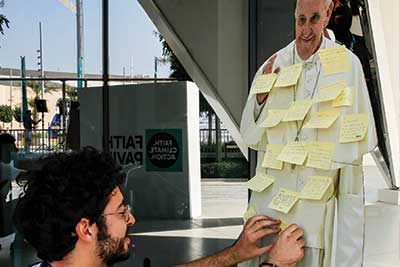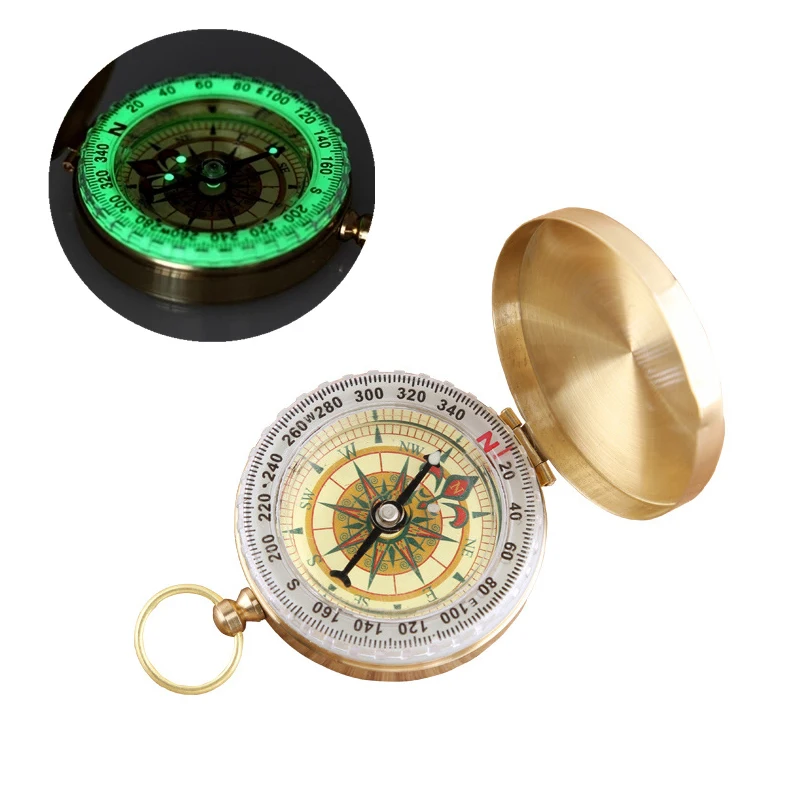DUBAI — World religions and religious leaders will be crucial to achieving the goals of the United Nations and its member governments in what they describe as an existential battle against man-made climate change. That was the message delivered by a growing coalition of priests, prelates, holy men, monks, bishops, imams, rabbis, witch doctors, shamans, ancestor worshippers, and other assorted spiritual figures assembled at the UN’s 28th Conference of the Parties (COP28) on global warming. All vowed that their flocks would be joining the holy war on global warming, too.
Religion was more central to this year’s “climate” summit than ever before. In fact, for the first time ever, the UN gathering featured a “faith pavilion” hosted by the UN Environment Programme and dozens of religious groups. The space was dedicated exclusively to harnessing the religions of the world in the battle against alleged man-made global warming. Countless prayers for “climate justice” and “green energy” went up from the summit to countless deities, with believers from widely divergent religious traditions locking arms in the fight to save “Mother Earth” from humanity.
“We ardently implore all decision-makers assembled at COP28 to seize this decisive moment and to act with urgency, weaving a tapestry of shared action and profound responsibility,” explained a statement by top religious leaders from around the world representing faiths including Islam, Catholicism, Orthodox Christianity, Judaism, Hinduism, Sikhism, Buddhism, and more before the summit began. “The urgency of the hour demands that we act swiftly, collaboratively, and resolutely to heal our wounded world and preserve the splendor of our common home.”
Among other goals, the dozens of religious leaders behind the statement, assembled by the UN, vowed to shepherd their followers into achieving “net zero” CO2 emissions. Claiming their faith instills a “sacred duty” to “cherish” the “ecosystem that cradles us,” the signatories vowed to “jointly address” the supposed global climate crisis. They demanded governments join them and “champion the development of a faith-based ecological narrative” and weave it into education, culture, and more. Finally, the holy men called for “lower-carbon lifestyles” and “social progress rooted in harmony with the Earth.”
The interfaith movement behind the pavilion and the religious side of the climate movement is increasingly prominent, broad, and powerful. Consider that among those cosponsoring the pavilion, strategically placed right at the heart of the summit compound, were the Muslim Council of Elders, the Interfaith Center for Sustainable Development (which released the new “Ten Commandments of Climate Change” at last year’s COP27 on Mount Sinai), the Episcopal Diocese of California, and dozens of other religious groups from around the world.
There to inaugurate the pavilion were the Grand Imam of Al-Azhar Ahmad Al-Tayyeb, United Arab Emirates President Sheikh Mohamed bin Zayed Al Nahyan, Vatican Secretary of State Cardinal Pietro Parolin standing in for Pope Francis, and many other powerful figures. All were involved in the Abrahamic Family House in Abu Dhabi that opened earlier this year featuring a Catholic church, a mosque, and a synagogue. The faith pavilion hosted dozens of events with key leaders from every religion you can think of, and many more beyond that.
Pope Francis, who was scheduled to attend the summit and the opening of the faith pavilion but backed out citing health concerns, claimed climate change was actually a “religious problem.” Calling environmental damage “an offense against God” and referring to emissions of CO2 as “toxic,” Francis cited his encyclical Laudato Si’ in demanding that countries (governments) place what he described as the “global common good” ahead of “national interests.” “We have a duty to protect our common home,” said Francis, who has stirred widespread opposition from conservative Catholics around the world.
“May we be attentive to the cry of the earth,” the pope said in prepared remarks delivered at the faith pavilion by Cardinal Parolin, who attended in Francis’ place and read his speech for him. “The climate, run amok, is crying out to us to halt this illusion of omnipotence.” Praising the faith pavilion for being “the first of its kind at the heart of a COP,” Francis said it stood as a testament showing “that all authentic religious beliefs are a source of encounter and action.”
Aside from the pope and his emissary, numerous other religious leaders also spoke from the pavilion. These included Chief Rabbi Ephraim Mirvis of the U.K., World Evangelical Alliance Secretary-General Bishop Thomas Schirrmacher, Divine Shakti Foundation President Sadhvi Bhagawati Saraswati, and an array of pagan leaders worshipping all sorts of deities that the Apostle Paul refers to in his letters as “demons.” All were welcome, the leaders declared, except undefined “extremists,” who were repeatedly condemned throughout the festivities.
Another bigwig religious boss at the event, World Council of Churches General Secretary Reverend Professor Dr. Jerry Pillay, echoed his far-left organization’s talking points when he blamed “fixation on profit” for the supposed “climate emergency.” Fixing the alleged emergency, he said, will require a “shift” away from “market-based solutions.” Among the policy prescriptions he demanded: ending fossil fuels, further criminalizing environmental sins, and much more. “Faith is the missing piece in the climate discussions and for climate action,” he added.
Right next to the pavilion, Chitya Keyur Sanghavi with the Brahma Kumaris World Spiritual University was teaching people how to deal with “climate anxiety” from stress about CO2 emissions and the lack of “climate justice.” Spiritual practices rooted in Hinduism such as meditation can help, he told The New American. Sanghavi, whose organization specializes in teaching people how to “connect with nature” and “connect with god,” said the “end goal is to be happy and be a good human being.”
On December 8, this writer witnessed an interfaith “faith walk” across the UN COP28 compound. It brought together more than a dozen self-styled world religious leaders, including self-proclaimed Christians, Jews, Hindus, indigenous pagans, a Zoroastrian, and more. Right before setting off on the walk, each religious leader was supposed to offer “one word” of hope. Organized by “Eco-Bible” author Rabbi Yonatan Neril of the Interfaith Center for Sustainable Development, who last year told The New American that religion must be a “delivery vehicle” for climate activism, all the speakers asked various deities for “climate justice.”
Some Hindu monks said protecting the planet would be pleasing to their gods. The Zoroastrian said the battle against climate change was a major part of the broader battle of good against evil. One self-described evangelical Christian from Brazil, who spoke in Portuguese, said black communities across Brazil and around the world were especially vulnerable, and that protecting the climate was the right thing to do for Africans and their descendants worldwide. A female Swedish Lutheran bishop prayed to Jesus for climate justice, while a pagan from Brazil with face paint asked her deities for help and shook a maraca.
Several of the leaders who spoke with The New American sounded totally sincere as they pleaded for what was universally described as “climate justice.” What exactly that means was never made clear, but calls for wealth redistribution and ending “fossil fuels” were ubiquitous. None of the self-proclaimed Christians who spoke with The New American throughout the summit seemed particularly concerned about hell, sin, damnation, Satan, or even Jesus. All, though, said “climate change” needed to be dealt with and that Christians must be involved in the fight.
Another one of the hundreds of speakers at the faith pavilion was Nury Turkel with the U.S. Commission on International Religious Freedom. Addressing the “climate crisis,” he called for religious leaders and institutions to get involved in fighting climate change and ensuring that their followers understand what he described as their “responsibility to the Earth.” He repeatedly referred to the United States as a “democracy” as he called on religious climate activists to work hard to influence policymakers.
Another speaker, a Jesuit priest from Africa, gave a talk on “eco-theology” and “transforming food systems.” Citing Pope Francis over and over again, especially Laudato Si’, the priest and several other Africans on stage argued that all Catholics had a duty to be involved in the fight to save the planet. The priest also quoted Bible verses to argue for “gender equality in food systems” and other talking points in line with the UN’s broader agenda, as a handful of people listened or hung out in the air-conditioned faith pavilion.

Perhaps most bizarrely, self-proclaimed environmental scientist Guy Lane of Australia launched a “new religion” at COP28 called “Vita Sapien.” The movement, which he told The New American was inspired by a “brown booby bird” that landed on his sailboat, holds that the entire Earth is a single living organism and individual people are like cells. Unfortunately, he suggested in a wide-ranging interview with TNA, many of these cells are no longer serving their proper function, and so something unspecified has to be done about this.
Religion and faith have become increasingly central to the UN “climate” machinery, and that was on full display at COP28 like never before. As The New American explained in last year’s cover story from COP27 on the Sinai Peninsula, where globalists unveiled the new Ten Commandments and told TNA they were working on a “Third Covenant,” this is all very deliberate. In fact, the UN has been working to bring religions on board for years, and those efforts are now bearing fruit as virtually every major religious movement lines up behind the UN agenda.
Management guru and establishment insider Peter Drucker explained that major global transformations of the sort envisioned by the UN’s climate movement require a “three-legged stool” approach. The first leg is government, with the UN bringing together virtually every national government in the world. The second leg is business. As such, the World Economic Forum is now a “strategic partner” of the UN in bringing business into the “unstoppable” transformation.
Read the rest of this article at The New American.


















































